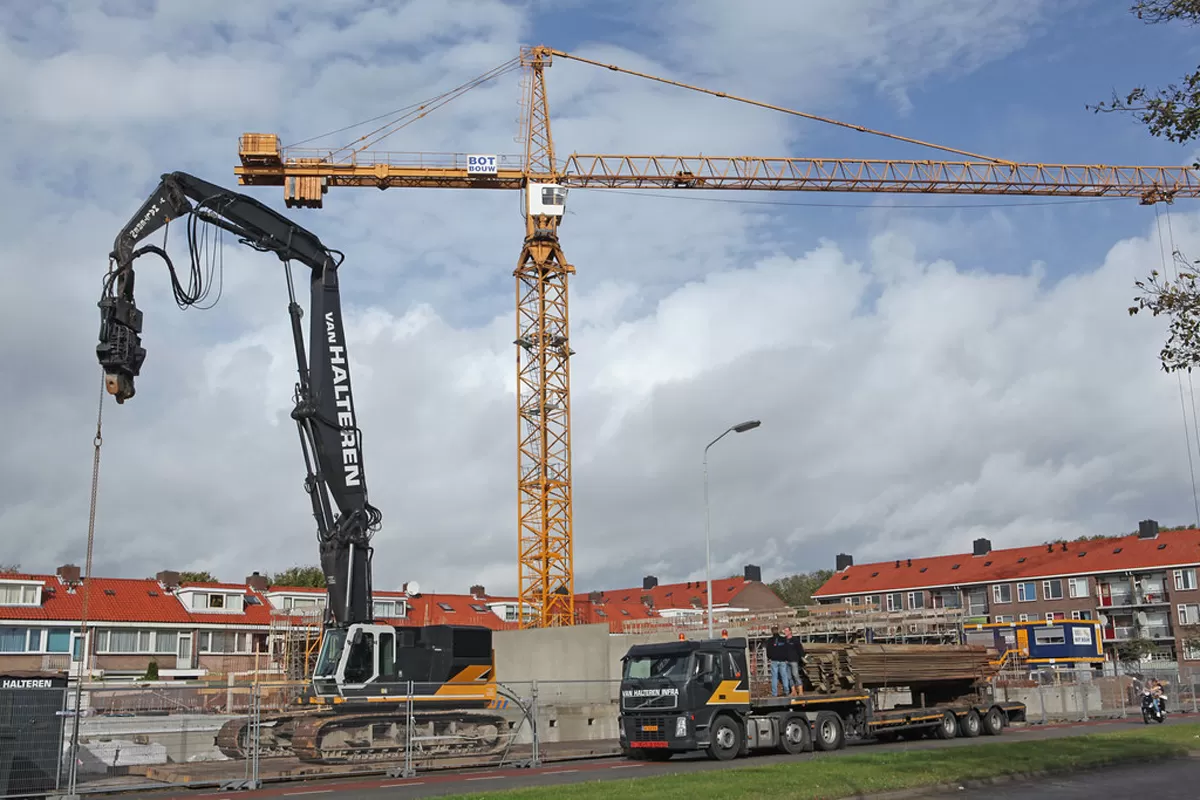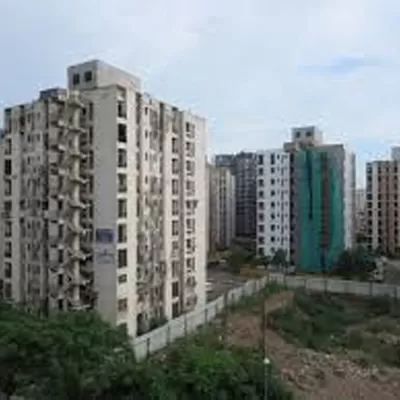Heat waves and new technologies bode well for the HVAC industry
Summer setting in early in 2017 is good news for the HVAC industry reeling under the adverse effects of demonetisation.
'Demonetisation de-grew the industry by 40 per cent in November, 15 per cent in December and 3 per cent in January,' says Anup Bhargava, Product Group Head-Air-Conditioners, Godrej Industries. 'February was more or less flat. From here on, we expect the growth trajectory to resume as a result of a good summer, the launch of the Goods & Services Tax (GST) and better consumer sentiments from the Union Budget.'
'After demonetisation, we could see a downward trend in the sale of commercial air-conditioners (ACs) owing to its impact on the real-estate sector, but in March 2017 we saw improvement,' says Mohamed Ibadullah, Country Head-VRF, ETA General. 'The next impact could be the introduction of GST, which will depend on the tax rate that would be applicable on air-conditioners.'
'HVAC enquiries slowed down in the last one year because of continued slowdown in private sector investments and implementation delays in major industrial and infrastructure projects. This was further impacted by commodity or energy price fluctuations, anticipation surrounding GST, etc,' says M Gopi Krishna, Executive Vice President & COO, Domestic Projects Group, Voltas.
In the next 12 months, the focus will be on ensuring industry readiness for GST, according to Sridar Narayanswami, Vice President and Managing Director, Emerson Climate Technologies (India). 'Ultimately, it will bring significant positives and help the GDP grow at a faster tick. This, smart cities and Make in India will all translate into greater commercial activity.'
Double-digit growth
Trends from 2016 suggest that HVAC demand will see double-digit growth. 'India's HVAC industry has been on an upward spiral of late, directly correlated to the growth of real estate,' says Kanwal Jeet Jawa, CE & Managing Director, Daikin Airconditioning India.
Jawa estimates the market will grow from 4 million units in FY2016 to 7 million in FY2020, at 15 per cent CAGR, driven by rising penetration (3-4 per cent currently versus a 30 per cent global average), higher disposable incomes, growing urbanisation and year-round usage.
'In 2016, appliances had a good run till October, 26 per cent growth to be precise,' points out Bhargava. 'ACs, per se, saw growth of 15-20 per cent. Behind this growth were low existing penetration, higher temperatures YoY and changing lifestyles that have made ACs a necessity as opposed to a luxury. Growing faster than the industry as a whole, against YTD January growth at 20 per cent, Godrej saw 33 per cent growth.'
'In 2016, demand crossed roughly 6 million units growing at a robust 30 per cent over the previous year,' says KC Poovaiah, Senior General Manager, Sales and Marketing, ETA General. 'Intense heat last summer helped volumes double in the South between February and April 2016. At a CAGR of 15-20 per cent over the next five to seven years, demand is certain to cross 15 million.'
Segments, locations with scope
Jawa sees scope in both the commercial and residential segments. 'Significantly, where 70 per cent of our India revenue came from commercial products a few years ago, today, barely five years after starting to manufacture residential ACs in India, 50 per cent is garnered from residential while 50 per cent comes from commercial.'
'We are mainly focused on commercial projects in India,' says Narayanswami. In this segment, he is bullish about the medium to long-term outlook, foreseeing double-digit growth over a three to five-year horizon as commercial projects come back on track as the economy continues to grow.
'We see GDP growth greater than 7 per cent as healthy.'
Gopi Krishna believes now that HVAC demand will increase on the back of office space absorption in major metro cities; renewed commercial real estate investments in markets like Delhi NCR, Bengaluru and Hyderabad; and PE funds investment in rent-earning commercial office space and entertainment space boosting new project announcements. 'We expect opportunities for integrated MEP contractors capable of executing large-scale complex projects within given timelines, in transportation (airport and metro rail), education and healthcare, due to increased government investments.'
This bodes well for Voltas given its association with India's first net zero energy building, Paryavaran Bhavan at Delhi, and its work in radiant cooling systems for comfort applications in education and healthcare sectors.
What customers want
Today's consumers are increasingly smart. 'Investors look for value from HVAC technology; they want to achieve the right cooling and keep the overall lifecycle cost low,' says Narayanswami. 'At Voltas, technologies and solutions have been centred around energy optimisation, which is the driving force for keeping the cost of ownership of a system or space low,' says Gopi Krishna. Voltas has introduced energy-efficient, inverter-driven centrifugal and screw chillers using environment-friendly refrigerants and a tri-generation vapour absorption machine using waste heat, low temperature hot water and low grade fuel for generating chilled water for air-conditioning.
'Indian customers are price-sensitive,' says Jawa. At Daikin, this has spurred innovation to downsize prices and introduce multiple price points to cater to metros as well as Tier-II and Tier-III cities. 'Higher localisation has curbed costs by nearly 35 per cent,' he adds. 'Minimising value-chain costs has also helped keep Daikin prices only 'Price and recurring running cost are the biggest concerns for customers,' says Poovaiah.
And in Bhargava's view, it is power consumption. 'This is not surprising, given that 70 per cent of the peak electricity load during summer is mainly owing to the running of ACs in metro cities,' he reasons. 'So with increasing YoY AC consumption, ACs consuming less electricity become all the more necessary.'
This outlook has driven Godrej to roll out the most energy-efficient AC performing on a par with a six-star and seven-star rating. A new Godrej launch - the NXW AC with 5.8 ISEER - a power-saving green inverter air-conditioner featuring the Green Balance technology, uses R290, the greenest refrigerant for having zero ozone depletion potential and minimum global warming potential in the industry.
Meanwhile, Emerson is best known for its scroll compressor range that offers best-in-class efficiencies and a digital compressor bringing modulated technologies to the forefront.
Small units vs central plants
Generally, room ACs are economically viable for residential buildings where only certain spaces need air-conditioning and individual control is desirable, says JC Sharma, Vice Chairman, Sobha Developers. Within a residential space, a window AC would suit a closed, small room while a split model suits, say, a dining room and attached drawing room, observes Navin M Raheja, Chairman & Managing Director, Raheja Developers.
'Window air-conditioners are maintenance-free and rugged but they consume more energy and are noisy because they run compressors at a fixed rate, meaning they must stop and start all the time,' says Raheja. 'Split air-conditioners are noiseless and consume less energy but need more maintenance. We mostly choose split air-conditioners to save energy.' Hitachi and LG offer both split and room air-conditioners that have been featured in Raheja residential projects like Vanya. 'Central plants are designed for large commercial buildings where almost every space needs air-conditioning,' says Sharma.
'At Sobha City Mall in Thrissur, a central plant cools the interiors, with higher co-efficient of performance chillers to help keep costs low.'
And Raheja says, 'At Raheja Mall, we have opted for a multi-split system over a single-split system or VRF or VRV system because it is more powerful, quick and effortless to set up, noiseless as well as extremely energy-efficient.'
The in-between options
Between the smaller and larger units, different options are now available. 'VRV (variable refrigerant volume) systems fall between central plants and split ACs; so, they are useful where a central plant would be too large and a split model too small,' says Sharma. Sobha Developers has installed a VRV system and split AC units in villas in International City, Gurgaon.
India's VRV market is picking up because the modular design makes it well suited for both new construction and retrofits of various sizes and across applications - schools, offices, retail, hospitality, multifamily and hospitals, according to Jawa. 'We're starting to see VRV units being fitted in supermarkets and grocery stores and I think VRV will start to move into small data companies and data centres.'
Also, the compact design of VRV systems helps developers minimise the mechanical footprint for leasable square footage to gain 20-30 per cent more space vis-a-vis traditional technologies, adds Jawa. 'VRV is suited to all climatic regions and to being utilised beyond basic cooling and heating, as a total solution that ties into the building management system and third-party air-handling units to control other building needs such as ventilation, hot water, etc.'
'Today VRF ACs are in demand and increasingly replacing bulky chiller plants, for delivering high power savings through inverter compressor technology, using eco-friendly refrigerants, and being compact, flexible in installation, building management system and automation compatible, and easy to operate, even through mobile apps,' elaborates Ibadullah. In particular, General's new 'Mini' VRF unit line-up is well suited to small apartments and offices. 'Like the larger units, these use inverter compressor technology but come in smaller capacities starting from 4 hp (3.2 tr),' he adds. A two-BHK apartment would use one VRF outdoor unit connected to multiple indoor outlets.
This trend is not to say simpler technologies and chiller technologies are on their way out. 'Given the range of applications, I see space for different kinds of systems - from simple fixed-speed ducted systems for smaller spaces and large, variable-speed inverter systems for larger spaces to chiller technologies for very large spaces,' says Narayanswami.
QUICK BYTES
- Market: From 4 million units in FY16 to 7 million in FY20, at 15% CAGR.
- Demand drivers: Penetration, higher disposable incomes, growing urbanisation and year-round usage.
- Demand for high temperature and energy-efficient products that deliver higher cooling output at higher temperatures.
Growing Scope for High Temperature Machines
Indian summers are getting hotter with temperatures soaring far above 35oC in two-thirds of the country. According to KC Poovaiah, Senior General Manager, Sales and Marketing, ETA General, 'This is boosting demand for high temperature machines, energy-efficient products that can also deliver higher cooling output at higher ambient temperatures. Products designed and rated at 35oC ambient for cooling may have de-rating effect when the actual working temperatures rise beyond that level.'
Inverter Air-Conditioners Gain Ground
Over the past six years, window air-conditioners have registered a decline while inverter air-conditioners have posted exponential growth of over 60 per cent. This trend is likely to continue growing the share of inverter models from 15 per cent to over 50 per cent, subject to its price positioning in relation to other options. According to KC Poovaiah, Senior General Manager, Sales and Marketing, ETA General, what may help is the new BEE energy-efficiency rating norm coming into effect in 2018, as the new ISEER table puts inverter and split air-conditioners in the same energy-efficiency category, making it easier for the consumer to choose a product without having to get into the technology specifics.
- Charu Bahri
To share your views on the HVAC market in India, write in at feedback@ConstructionWorld.in


















